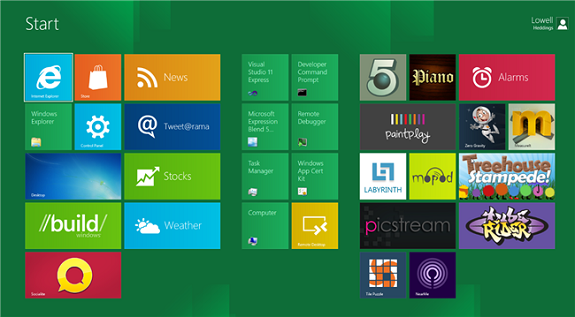No Start Menu? The Windows 8 Metro Interface
With the roll out of Windows 8 scheduled for October 26 fast approaching it's time to take a look at the changes in the lastest version of Microsoft's flagship Operating system. The first thing everyone will notice is the radically changed interface. In a huge gamble Microsoft has tried to combine the style and functionality across it's phone, tablet, and desktop systems into one modern UI known initially as Metro. Heave smartphone and tablet users will probably find a smoother transition as much of the interface is optimized for touch screen use. With even such old faithful features as the Start Menu cut, users who spend most of their time on the desktop will likely face a steeper learning curve as some of the most basic tasks such as shutting down the system may take a little searching. App makers have acted quickly to add back some of the more familiar functions with some computer manufacturers even shipping new systems with support for the Start Menu added.

A typical Windows 8 start screen
To better understand how the average everday user initially responds to the changes, self described geek Chris Pirillo took an advanced copy and performed impromptu interviews with people gathering their initial impressions of Windows 8.
What do people think of Windows 8?
The results: people were confused by the interface changes and had trouble completing simple tasks. The tone of the responses was not positive with many unfavorably comparing it to an expanded version of a phone. Others speculated that it'd be a long time before they saw the upgrade because of the retraining required to take advantage of the new interface. In short, people were less than enthusiastic.
What remains to be seen is how these changes will play out over the longer term. It's not uncommon for people to be resistant to change and prefer to stick to the familiar initially. In the long term though, will the merging of themes across devices outweigh any specific functionality lost in the shuffle? Will the other features packaged with Windows 8, the lower memory use and decrease in processes and system resources used, the faster boot times, and the integrated cloud features overcome the initial resistance to change in the UI. Microsoft answers with a resounding yes. What about you?